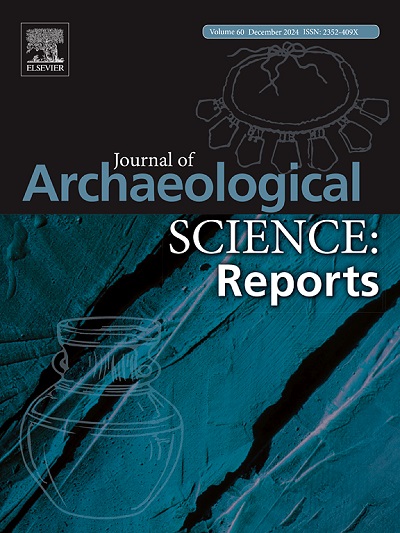新石器时代晚期的人工住宅地面设计:中国双槐树遗址的综合研究
IF 1.5
2区 历史学
0 ARCHAEOLOGY
引用次数: 0
摘要
双槐树遗址是迄今为止在黄河流域中华文明形成初期发现的具有都城性质的最高中心聚落。这里出土了丰富的新石器时代建筑遗物,如围壕、土屋、祭坛、院落等。长期以来,史前人工住宅的地面一直是研究人员调查史前活动、探究建筑结构和材料的重要材料。因此,本研究采用形态、成分和物理性质检测相结合的综合分析方法,对双槐树遗址新石器时代晚期(公元前 3500-3000 年)的七座房屋地面进行了研究。结果发现了三种不同类型的地面结构:单层地面、双层地面和多层地面:单层地面由姜果粉(一种富含碳酸钙的第四纪沉积物)或火烧土构成,是中国新石器时代晚期常用的人工住宅地面。其他两种类型主要包括底层为未经处理的土壤作为缓冲层,上层为姜果、河沙和土壤的混合物。模拟实验表明,这种地板设计既增强了地板的强度和耐久性,又不影响其防潮性能。值得注意的是,我们在三个案例中发现了罕见的石膏抹灰地板层,这是中国新石器时代首次发现此类人工结构。此外,一些地板表面出现了由生物因素沉积的针状纤维方解石,而不是由所使用的石灰抹灰造成的。本文章由计算机程序翻译,如有差异,请以英文原文为准。
The artificial dwelling floor design in the late Neolithic Age: A comprehensive study of the Shuanghuaishu site, China
The Shuanghuaishu site was the highest central settlement with the nature of a capital city found so far in the early stage of the formation of Chinese civilization in the Yellow River basin. It had yielded a wealth of Neolithic building relics, like encircling trenches, earth houses, sacrificial altars, and courtyards. For a long time, the floors of prehistoric artificial dwellings had served as a critical material for researchers to investigate prehistoric activities and delved into the structures and materials of building practices. Thus, in this study, a comprehensive analysis method that combined morphological, compositional, and physical property detection was employed to investigate the seven house floors from the late Neolithic period at Shuanghuaishu site (3500–3000 BCE). The results revealed three distinct types of floor structures: single-layer, double-layer, and multi-layer floors: the single-layer floors constructed from ginger nut (a quaternary deposit abundant in calcium carbonate) powder or fire-baked earth was commonly used as artificial dwelling floors during the late Neolithic age in China. The other two types mostly included untreated soil in the bottom layer as a cushion layer and a blend of ginger nut, river sand, and soil in the upper layers. Simulation experiments demonstrated that this floor design enhanced the floor’s strength and durability without compromising its moisture resistance. Notably, we discovered rare gypsum plastered floor layers in three cases, marking the first identification of such artificial structures in Neolithic China. Additionally, some floors showed needle fiber calcites deposited by biological factors on the surfaces, not from the lime plaster used.
求助全文
通过发布文献求助,成功后即可免费获取论文全文。
去求助
来源期刊

Journal of Archaeological Science-Reports
ARCHAEOLOGY-
CiteScore
3.10
自引率
12.50%
发文量
405
期刊介绍:
Journal of Archaeological Science: Reports is aimed at archaeologists and scientists engaged with the application of scientific techniques and methodologies to all areas of archaeology. The journal focuses on the results of the application of scientific methods to archaeological problems and debates. It will provide a forum for reviews and scientific debate of issues in scientific archaeology and their impact in the wider subject. Journal of Archaeological Science: Reports will publish papers of excellent archaeological science, with regional or wider interest. This will include case studies, reviews and short papers where an established scientific technique sheds light on archaeological questions and debates.
 求助内容:
求助内容: 应助结果提醒方式:
应助结果提醒方式:


